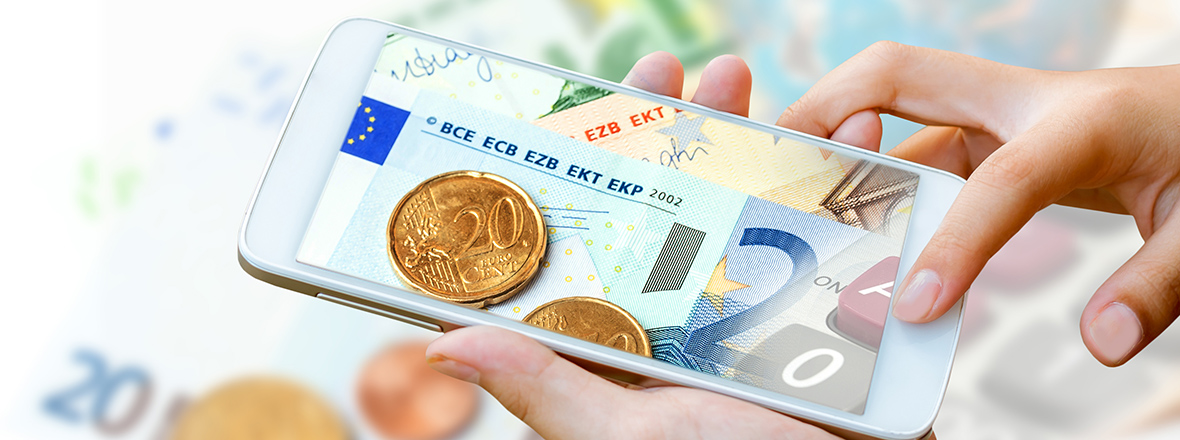What is a digital euro?
Central Bank Digital Currency (CBDC), as its name indicates, is a digital form of public money issued by a central bank. The CBDC proposed for the euro area is referred to as the digital euro.
The digital euro would be available to private individuals. The digital euro is still in the planning phase; no decision has yet been reached on whether it will be issued. If it is introduced, it would serve as the digital form of our common currency, the euro. It would not replace euro banknotes or coins, but rather function as an alternative payment instrument. The digital euro has nothing to do with cryptoassets.
CBDCs already exist in central bank accounts, but members of the public only access to central bank money in the form of physical cash. In this sense, the digital euro could be seen as the next phase in the evolution of money.
Why a digital euro?
The Eurosystem, which comprises the European Central Bank and the national central banks in the euro area, works to assure the reliability and efficiency of the payments system and the financial system in a world with ever increasing digitalisation.
With the declining use of cash and wide acceptance of electronic payment solutions, central banks around the world have begun to consider the implications of CBDC issuance.
Moreover, the solutions used for digital payment by Europeans are currently highly dependent on commercial actors outside Europe.
The digital euro is intended to strengthen the status of central bank money as the anchor of the financial system as well as increase Europe’s strategic autonomy and payments competition in the euro area.
When would the decision on implementation of the digital euro take place and who would make it?
Eurosystem experts have been studying CBDCs since early 2020. A broad research project on the possibility of a digital euro, or "digieuro," was launched in 2021 to specify the form the digital currency might ultimately take. The decision to go ahead with the issuance of the digital euro still demands considerable study and preparation, so it is unlikely that the digieuro’s launch would occur in the near future.
As part of the Eurosystem, the Bank of Finland participates actively in digieuro development. The project’s main decision-making body is a high-level working group in which the Bank of Finland is represented by Bank of Finland board member Tuomas Välimäki. The final decision on proceeding with the project lies with the ECB’s Governing Council.
The Bank of Finland pioneered CBDCs in the 1990sThe Avant card for offline payment, developed in the 1990s at the Bank of Finland, was possibly the world’s first CBDC. The Avant card and system was designed for a world with declining cash use and increasing commercial transactions in digital environments. The Avant card could be used for offline payment in a phone booth, and more importantly in public transport, kiosks and shops. It could also be used in online commerce. The concept never gained wide acceptance, so the Bank of Finland sold its Avant card business to commercial banks in 1995. The business was subsequently integrated into the normal range of services offered by banks. To read more about the Avant card and experiences with it: Keskuspankin elektroninen raha: Suomen Pankin toimirahakokeilu 1990-luvun alkupuoliskolla Lessons learned from the world’s first CBDC |

